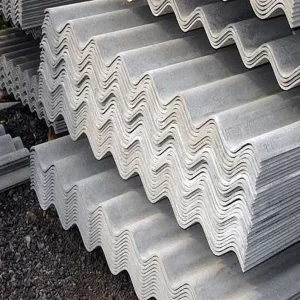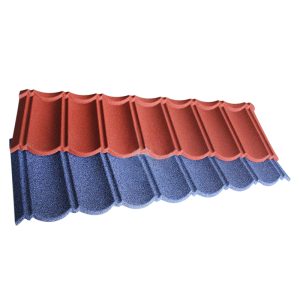Asbestos roof sheets were a popular choice in the construction industry for their durability, fire resistance, and insulation properties. However, asbestos is now recognized as a hazardous material due to its link to serious health issues, such as lung cancer and mesothelioma. If you have an asbestos roof, it’s crucial to take proper precautions to seal and maintain it. This comprehensive guide will provide a step-by-step process for sealing asbestos roof sheets, ensuring safety and longevity.
Article contents

I. Understanding Asbestos Roof Sheets
A. What are asbestos roof sheets
Asbestos roof sheets are made from a mixture of cement and asbestos fibers. They were commonly used in industrial and residential buildings during the 20th century. The asbestos fibers provide strength and durability, while the cement acts as a binder, creating a weather-resistant material.
B. Common types of asbestos roof sheets
There are two main types of asbestos roof sheets: corrugated and flat. Corrugated sheets have a wavy pattern and are typically used for roofing applications, while flat sheets are used for siding or as an underlayment.
C. Risks associated with asbestos roof sheets
When asbestos fibers become airborne, they can be inhaled and cause serious health problems. Over time, exposure to asbestos can lead to respiratory issues, including lung cancer, asbestosis, and mesothelioma. Sealing asbestos roof sheets helps prevent the release of fibers into the air, reducing the risk to occupants and the environment.
II. Preparing for the Sealing Process
A. Assessing the condition of the roof sheets
Before you begin the sealing process, it’s essential to assess the roof sheets’ condition. Look for any signs of damage, such as cracks or loose material. If the sheets are severely damaged, you may need to consult a professional for removal or repair.
B. Ensuring safety measures are in place
It’s vital to take safety precautions when working with asbestos. Wear personal protective equipment (PPE), including a mask, goggles, gloves, and a disposable coverall. Additionally, set up proper ventilation and containment measures to prevent the spread of asbestos fibers.
C. Gathering necessary tools and materials
You’ll need the following tools and materials to seal asbestos roof sheets:
- Ladder
- Safety harness
- Broom
- Wire brush
- Paint roller or sprayer
- Primer
- Asbestos encapsulation sealant
- Topcoat

III. Steps to Seal Asbestos Roof Sheets
A. Cleaning the roof surface
Begin by cleaning the roof surface with a broom or wire brush to remove any loose debris, dust, or dirt. Be gentle to avoid releasing asbestos fibers into the air.
B. Repairing any damaged or cracked sheets
If you find any damaged or cracked sheets, repair them using an asbestos-approved patching compound or consult a professional for assistance.
C. Applying a primer coat
Apply a primer coat to the asbestos roof sheets using a paint roller or sprayer. This will create a smooth, even surface for the encapsulation sealant to adhere to.
D. Applying a specialized asbestos encapsulation sealant
Once the primer is dry, apply the asbestos encapsulation sealant. This specialized sealant is designed to encapsulate asbestos fibers, preventing them from becoming airborne. Follow the manufacturer’s instructions for application and drying time.
E. Adding a topcoat for additional protection
After the encapsulation sealant has dried, apply a topcoat for added protection and durability. This will help prolong the life of the roof sheets and provide a clean, finished appearance.
IV. Post-Sealing Considerations
A. Regular inspection and maintenance
Regularly inspect your sealed asbestos roof sheets for signs of wear, damage, or deterioration.
B. Monitoring for asbestos exposure
Keep an eye out for any signs of asbestos exposure, such as respiratory issues or a persistent cough. If you suspect asbestos exposure, consult a healthcare professional immediately.
C. Knowing when to replace asbestos roof sheets
Sealing and maintaining asbestos roof sheets can extend their lifespan, but eventually, they will need to be replaced. Consult a professional to determine when it’s time to replace your asbestos roof sheets safely.
D. Safe disposal of asbestos materials
When disposing of any asbestos materials, such as debris or protective gear, follow proper disposal guidelines to prevent the release of asbestos fibers into the environment. Consult local regulations and waste disposal facilities for guidance.
E. Working with professionals
If you’re unsure about any aspect of sealing asbestos roof sheets or are concerned about potential risks, it’s always best to consult a professional. They can help guide you through the process, ensuring safety and compliance with regulations.
Conclusion
Sealing asbestos roof sheets is an essential step in maintaining their safety and longevity. By following the steps outlined in this comprehensive guide, you can effectively reduce the risk of asbestos exposure while extending the life of your roof sheets. Remember to prioritize safety when working with asbestos materials and consult a professional if you have any concerns or questions.


